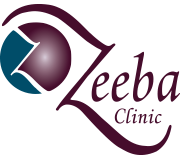Scar revision minimizes the appearance of a mark left over from a prior surgery/injury. The goal of treatment is to make raised, recessed or otherwise noticeable or unsightly scars look more similar to the surrounding skin in both color and texture. Dr. Guyuron has several options for improving the appearance of different types of facial scars.
SCAR TYPES
Scars are visible reminders of a burn, cut or tear in the skin. Some scars may be very minor, while others are quite obvious and even disfiguring. They may be partially concealed by makeup but still visible. In extreme cases, a scar on a person’s joint can limit range of motion.
Keloid scars are raised nodules that appear at the site of a wound. Upon sustaining an injury, the skin cells and connective tissue cells multiply to repair the damage, a process that continues even after the wound has been filled in. This causes the keloid to project away from the surface of the skin and resemble a mound. Keloids may be hyperpigmented, itchy, red and/or painful. Keloid scars are common in areas where there is little underlying fatty tissue, like the face, neck, chest and shoulders. These scars are more likely to develop in people with darker skin.
Hypertrophic scars are thick clusters of scar tissue that appear at the site of a wound. Hypertrophic scars may be red, raised and uncomfortable, and may widen with time. They may be darker or lighter in color than the surrounding skin.
Acne scars are generally less noticeable than keloid or hypertrophic scars, but still may be bothersome. They are usually discolored and have a different surface than the surrounding skin.
Contractures occur in cases of significant tissue loss (e.g. , burn scars). When the skin and underlying tissue pulls together during healing, a contracture will form and could restrict movement. Contractures most often affect the fingers, elbows, neck or knees.
The type of treatment that Dr. Guyuron recommends will depend on the type and severity of the scar.
TREATMENT TECHNIQUES
Scars can be revised through injectable therapy, surgical excision or surface treatments.
Injectable treatment is often appropriate for scars that are depressed or concave. The injectable substances provide temporary results, lasting from several months to several years, and treatment must be repeated to maintain the results.
Alternatively, surface treatment may soften texture irregularities and improve the pigmentation of a scar. Surface treatment involves removing the top layers of skin using laser energy, dermabrasion or chemical peel solution.
Laser skin resurfacing is a non-surgical treatment in which a laser penetrates the surface of the skin and causes a uniform injury to the outermost skin. This reveals fresh, healthy skin underneath. Dermabrasion uses an abrasion tool to mechanically remove the upper layer of skin. During chemical peel, a special solution (mostly consisting of different acids) is applied to the surface of the skin, which causes the outer layers to slough off afterward.
Other scars must be completely excised.
MORE ABOUT SCAR REVISION
In many cases, scar revision can be performed in the office. Dr. Guyuron will recommend a form of anesthesia to prevent any discomfort.
After treatment, it’s normal for the scar to worsen in appearance before it improves. The recovery process can take several weeks to several months, depending on the treatment and size/severity of the scar.
